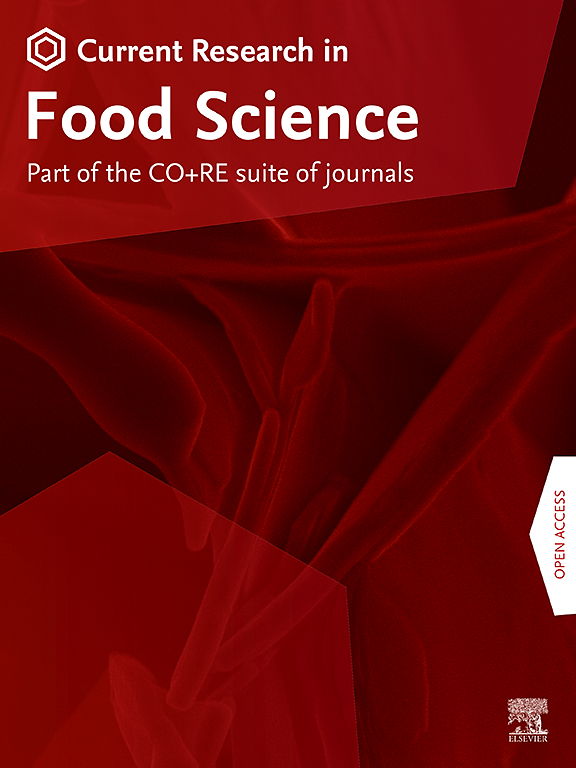Effects of plasma-activated water on structural and functional properties of PSE-like chicken protein isolate
IF 6.2
2区 农林科学
Q1 FOOD SCIENCE & TECHNOLOGY
引用次数: 0
Abstract
Pale, soft and exudative (PSE)-like chicken meat is rich in high-quality proteins, however, due to the properties of PSE-like meat, the functional characteristics of PSE-like chicken meat protein isolate (PPI) are affected. The present investigation aimed to improve the functional properties of PPI by employing plasma activation water (PAW), with the ultimate goal of enhancing its utility in various applications. The effects of PAW on the structure and function of PPI were evaluated. PAW treatment induced the protein structure to change from random coil to α-helix, which made the protein conformation more stable. PAW caused the hydrophobic residues to be exposed, thereby effectively enhancing their surface hydrophobicity. Dynamic rheology revealed the storage modulus of PPI gradually raised with increasing of PAW activation time. The scanning electron microscopy (SEM) showed that PAW promoted PPI to form a rough surface. When PAW activation time increased to 40 s, the foaming ability of PPI was raised by 77.84%, the emulsifying activity index was increased to 20.94 m2/g, the emulsion stability index was improved by 20.40%, and the in vitro digestibility was increased by 25.15% (P < 0.05). The above results showed PAW could modify the structural properties, and effectively improve the emulsifying and foaming properties of PPI, and increase the in vitro digestibility of PPI.

求助全文
约1分钟内获得全文
求助全文
来源期刊

Current Research in Food Science
Agricultural and Biological Sciences-Food Science
CiteScore
7.40
自引率
3.20%
发文量
232
审稿时长
84 days
期刊介绍:
Current Research in Food Science is an international peer-reviewed journal dedicated to advancing the breadth of knowledge in the field of food science. It serves as a platform for publishing original research articles and short communications that encompass a wide array of topics, including food chemistry, physics, microbiology, nutrition, nutraceuticals, process and package engineering, materials science, food sustainability, and food security. By covering these diverse areas, the journal aims to provide a comprehensive source of the latest scientific findings and technological advancements that are shaping the future of the food industry. The journal's scope is designed to address the multidisciplinary nature of food science, reflecting its commitment to promoting innovation and ensuring the safety and quality of the food supply.
 求助内容:
求助内容: 应助结果提醒方式:
应助结果提醒方式:


